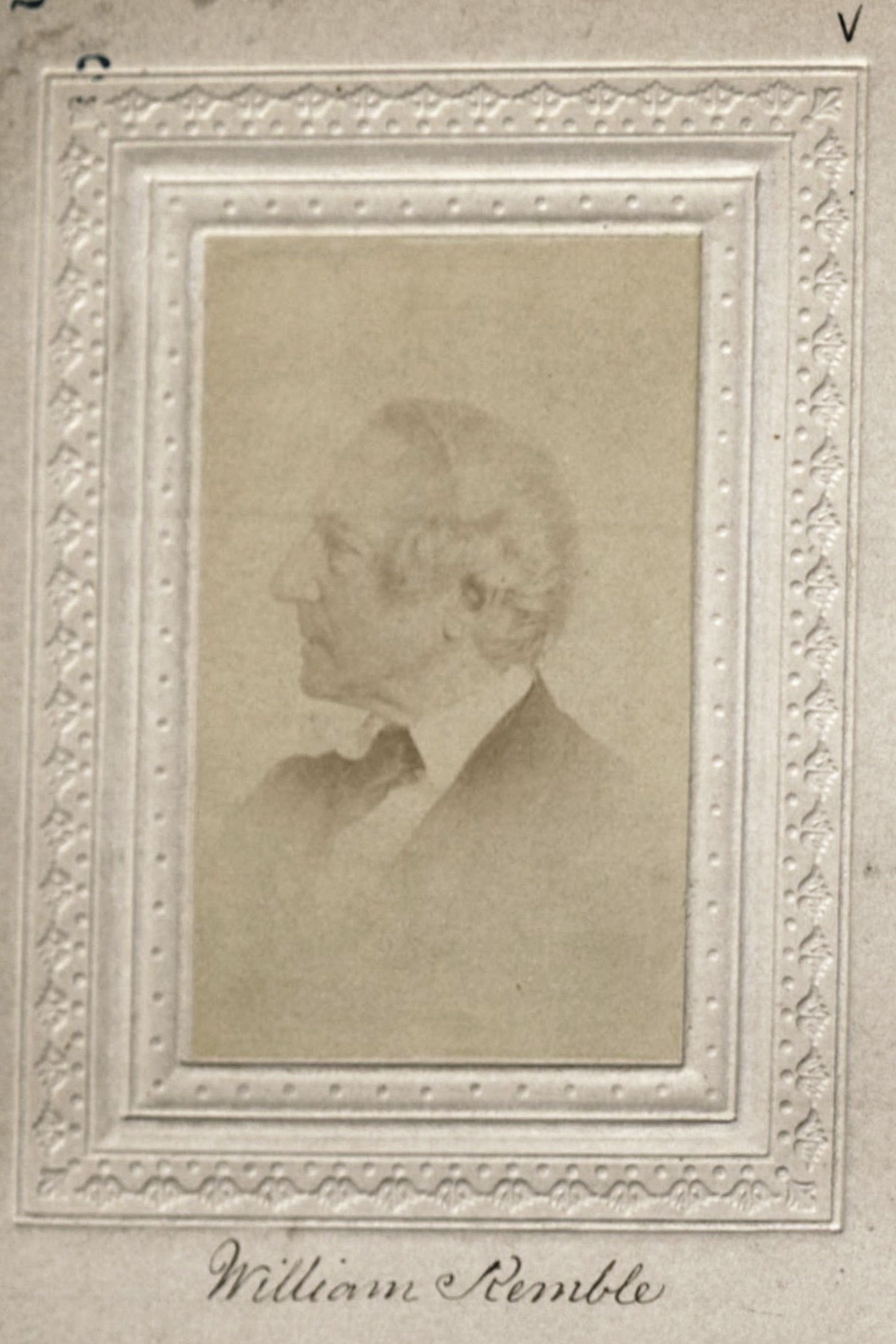Manufacturer (West Point Foundry)
Centurion, 1847–1881
Born 22 September 1795 in New York (Manhattan), New York
Died 5 November 1881 in New York (Manhattan), New York
Buried Green-Wood Cemetery , Brooklyn, New York
, Brooklyn, New York
Proposed by N/A: Founder
Elected 13 January 1847 at age fifty-one
Archivist’s Note: Brother of Gouverneur Kemble; father of Peter Kemble; uncle of James N. Paulding and William I. Paulding; grandfather of Peter Kemble; great-uncle of James Kirke Paulding
Proposer of:
Seconder of:
Century Memorials
William Kemble was one of the twenty original Centurions in 1846 [sic: 1847], of whom only six survive. Actively devoted to the welfare of the Club in its earlier and quieter days, he gradually withdrew when it began to extend its range, and reflect more clearly the conditions and interests of a new and changing community. Seldom a visitor in later years, he never came among us without leaving through his dignified courtesy, the impression of a refined and kindly nature. There was much in him of the artist and the poet; and there was everything in him of that old-fashioned gentleman-hood which has almost become a thing of the past.
Augustus R. Macdonough
1882 Century Association Reports
William Kemble, a West Street commission merchant and later in the Kemble family iron business, was about thirty-eight when the Association was incorporated. In 1849, he had joined the Sketch Club, which held at his house its last recorded meeting, April 9, 1869. He was one of the committee of twelve who placed on the mall in Central Park the bronze statue of Fitz-Greene Halleck,—according to James Grant Wilson the first such monument to a poet erected in the United States.
At Kemble’s suggestion, the Century appointed a committee, February 2, 1856, with power (which was not exercised) to purchase a plot in Green-Wood Cemetery “for the interment of the bodies of members in cases where their friends may not make more suitable provision.”
The Club book for 1881—Augustus R. Macdonough being secretary—records the death of Kemble, who “never came among us without leaving through his dignified courtesy the impression of a refined and kindly nature. There was much in him of the artist and the poet; and there was everything in him of that old-fashioned gentlemanhood which has almost become a thing of the past.”
Centurion Paul P. Duggan’s crayon profile of Kemble hangs in the billiard-room.
Literature Committee
“Incorporators of the Century, 1857” (1936 pamphlet)
William, a brother of Gouverneur Kemble, graduated from Columbia College in 1813. He was a commission merchant and then took part in the family iron business. He joined the Sketch Club in 1849; the club held its last meeting in his house in 1869. He was one of the committee of twelve who placed the statue of Fitz-Greene Halleck on the Mall in Central Park, probably the first monument to a poet in the United States.
William A. Frosch
“Our Original Amateurs, 2009”

